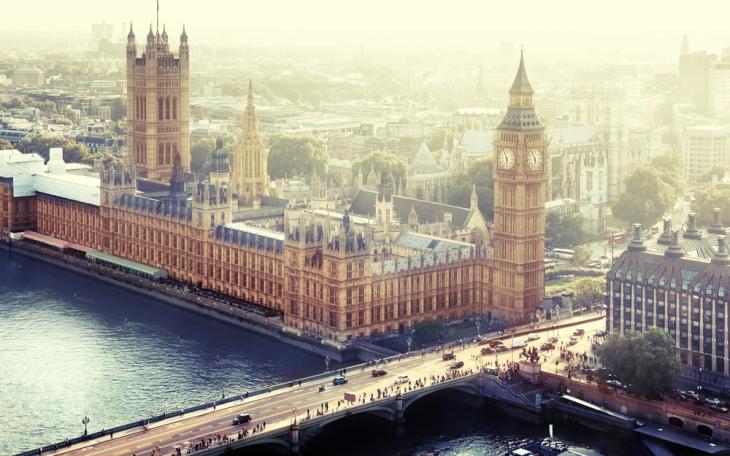Creaking and crumbling: what does the future hold for the Palace of Westminster?

As the furore over outside interests and second jobs rumbles on, trust in MPs may be facing another full-scale repair job, but so too is Parliament itself. With MPs back full-time in the Palace of Westminster now the hybrid system introduced during the pandemic has ended, they might be spending a bit more time looking around and wondering about the state of the building they have returned to.
The historic Palace of Westminster, built from the ashes of the 1834 fire that destroyed the old parliamentary complex, is universally agreed to be in dire need of repair.
A joint committee of MPs and Peers that included the now Leader of the Commons, Jacob Rees-Mogg, concluded in 2016 that the Palace “faces an impending crisis which we cannot responsibly ignore”, warning that “there is a substantial and growing risk of either a single, catastrophic event, such as a major fire, or a succession of incremental failures in essential systems which would lead to Parliament no longer being able to occupy the Palace.”
You wouldn’t think it if you were stood looking at it from Parliament Square. The building itself is structurally sound, notwithstanding stonework that often crumbles away at the touch and – more concerningly – increasingly frequent incidents of falling masonry.
The real problem is the mass of pipes, wires and mechanical systems that have been packed into the building over the years, as each generation of new technology has been layered on top of the last. The creaking system that keeps the Palace going is well past what should have been the end of its working life and, with the demands of hundreds of MPs and Peers, plus thousands of staff and visitors, greater and greater strain is being put on the old building.
More worrying than the unedifying prospect of MPs being suddenly turfed out of their historic home by a mechanical shutdown is the risk of a fire that could quickly get out of hand and threaten the full destruction of the Palace, something that particularly focussed minds following the huge fire at Notre-Dame de Paris in 2019.
The Head of the Renewal and Restoration project said recently that on-going maintenance now costs a staggering £2 million a week. The money that will be needed for full restoration and renewal will dwarf that and stretch into the several billions of pounds.
There have been significant steps forward to addressing these risks since the 2016 Joint Committee Report, but progress has not always gone in a straight line. In 2018 MPs voted to endorse – in principle - the Committee’s recommendation for a “full decant”, which would involve MPs and Peers moving to a temporary new home to enable works to take place faster (and less expensively).
Since the vote in 2018, however, there have been more than a few cold feet amongst MPs about whether, when push comes to shove, they really want to leave the Palace, with some fearing the scale of the work could mean they are kept away for longer - or indefinitely - if the project were to spiral out of control.
The Sponsor Body established to do the detailed scoping work for the project has since been charged with presenting MPs with an option for maintaining a “continued presence” in the Palace and plans for a temporary chamber within the grounds of the next-door Department of Health and Social Care were written off at a cost of £70 million.
All this indicates that MPs are likely to stretch every sinew to stay in their historic home and have the work of restoration and renewal take place around them, something the Joint Committee Report warned would add significantly to the time and cost involved.
Of course, this is no ordinary renovation project. At every turn, uncomfortable political choices have loomed for MPs, who are acutely aware – even before the current crisis of confidence in politicians - of the contrast of approving a huge multi-billion-pound bill to restore the Palace of Westminster while making difficult spending decisions affecting their constituents. MPs have long worried about the criticisms that would follow that they are spending money on themselves.
This is despite the fact that approving the programme would make MPs working lives harder, not easier, and involve them giving up the relative grandeur of the Palace to ensure it remains in place for future generations. That has always been a hard sell, however true it may be.
Some have consistently argued that MPs should leave Westminster all together, building a modern Parliament away from London and turning the Palace into a museum. But there is little appetite among MPs for such a plan, not least because the long and expensive work to make the Palace safe would be needed whatever future were chosen for it.
So until now each generation of MPs has always wanted to pass the final decision onto the next for fear of a backlash from voters. And with a vote on the final, full business case currently planned for 2023, with a general election expected just months afterwards, don’t be surprised if MPs once again opt for a bit more delay when it comes down to it.
Ultimately, however, as the Joint Committee concluded in 2016: “The Palace of Westminster does not belong to MPs and Peers, it belongs to the people of the United Kingdom.” Those MPs and Peers who call it home at any given moment are, it said, “merely its custodians”.
How well the current crop of custodians is remembered by future generations will be determined in large part by the decisions they make in the coming years.










